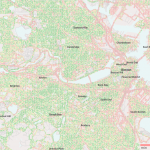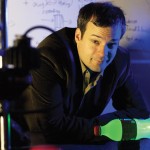This is part 1 of a multi-part blog series about the Society of Autonomous Vehicles course held in Spring of 2018 at the MIT Media Lab.
How will the autonomous vehicles change society? What are the technical limitations? What ecosystems are in place or must be built: technical, social, and cultural? What parallel advancements will impact deployment? How will we future-proof indirect and unanticipated challenges for the society?
Once only a topic of science fiction, Autonomous Vehicles (“AVs”) are quickly becoming a reality. Prototypes and concepts have consistently demonstrated that technical hurdles can be overcome, fostering over $3 Billion of investment in 2017 alone. It is expected that within a decade 15% of new cars rolling off the assembly line will be fully autonomous. AVs may significantly reduce 94% of all human-caused fatalities on the road, saving almost 33,000 lives on American roads alone. With many other financial and cultural effects it is clear that AVs will change society in a fundamental way.
The Magic of Autonomous Vehicles
“What magical trick makes us intelligent? The trick is that there is no trick. The power of intelligence stems from our vast diversity, not from any single, perfect principle.” —Marvin Minsky, The Society of Mind, p. 308
Much like the mind or intelligence, the “trick” of AVs comes from complexity and cooperation. In order for AVs to become fully functional in society, a complex ecosystem of parts working both independently and cooperatively needs to be created. Collaborative technologies will need to exist—within a vast range of areas, technical and otherwise. For example, mapping (both for normal roads and obstacles like traffic or construction), routing, detection (other vehicles, obstacles, pedestrians, etc.) More independent components, like charging stations, systems for automated delivery, insurance, and similar necessities all need to seamlessly work together to pull off Minsky’s “magic trick.”
Current Limitations
A number of problems still exist for AVs, from a technological standpoint. One of the biggest issues that face AVs is that of “edge cases,” all of those circumstances that are outside of “normal” driving conditions. This includes weather issues (like fog)1, construction, or even behaviors of other road occupants (pedestrians, animals, vehicles, etc.)2 There are a number of approaches to testing for many of these cases including simulations, closed-course testing, and public road testing. In all of these testing situations, a very large amount of data is required, either through physical repetition or to create enough simulated scenarios for adequate training. A potential approach to alleviating the data problem would be open-source, universal access to data collected by the entities who are running these tests, though at the moment very few companies appear to be willing to take that step, though some attitudes are leaning in that direction3.
Mapping also continues to be a standing problem for AVs. Construction frequently causes closures and route changes, as can events (parades, sports games, emergencies) and weather. Currently, a number of mapping systems are available for navigational use, with many advancements being made through efforts like user-input and crowdsourcing. However, in order for AVs to safely and effectively navigate roadways, more accurate mapping technologies will need to exist that are universally accessible and report in real-time. There are a number of ideas on how to achieve this accuracy through data collection, but many of these ideas would require changes in how and when data is collected, and questions of privacy come into play.
AI-assisted driving is becoming a more regular component of new models of cars on the market. At the moment, the functions are pretty simple, things like lane detection and collision detection. As cars become more autonomous, questions about safety will become more and more prevalent. At what point can an algorithm be deemed “safe”? Who makes those decisions—government, manufacturers, the general public? Questions of liability also need to be addressed; how will insurance change when cars are fully-autonomous? As cars move toward level 5 autonomy, these issues will become a large part of the conversation about how things will advance—technically, economically, and culturally.
Moving Forward: Smart Cities
To contribute to the magic of AVs, a number of complex ecosystems need to be in place. The largest-scale physical example of this would have to be cities. As more and more elements of our lives become “smart,” fully “smart cities” are an obvious extrapolation. AVs will need to interface with these smart cities in a number of ways and will serve a variety of functions. Automated delivery, improvement and collaborative interconnection with already-existing public transit systems, and city restructuring are just a few of the considerations that need to be made.
With fewer personally-owned vehicles on the road, how will city parking change? Large parking garages will potentially become obsolete and no longer a source of revenue. With AVs in existence, will cities become more or less pedestrian-friendly? How will land originally zoned for parking, driveways, and roadways change? As AVs come with a push toward electric vehicles, will gas stations become charging stations? Ideas such as “trains” made of AVs replacing or adding to existing public transit systems, changing rail lines to be AV routes (for both human transit and freight), and even flying cars were discussed within these topics.
The City Science group at the Media Lab presented on a number of topics relating to smart cities. Ariel Noyman spoke to the class about city-wide changes and how to best smooth the transition to an autonomous smart city where AVs are a fixture. Ridesharing (and society’s perceptions therein) will play a large part in this, but Noyman’s discourse also focused on ideas of the changing of the facades of buildings, a reduction in pollution, and different road/pedestrian designs.
Arnaud Grignard, also of the City Science group, uses data-driven techniques to influence how cities will change. Experiments related to cities are complicated for a variety of reasons. Grignard has developed an open-source agent-based programming language, called GAMA4 to conduct urban design experiments, including those involving AVs. These experiments can be used to help with the transition to a world involving AVs and make better urban planning decisions.
Kent Larson, the Principal Research Scientist in the City Science group, focuses his work around a number of topics involving cities and planning. Speaking to the class he highlighted points relating to the vehicle’s role in the development of cities, and the ecological repercussions therein, particularly CO2 levels and energy consumption. One of his research projects, the Persuasive Electric Vehicle (“PEV”)5, is being developed as a healthy, and sustainable, alternative to cars.
Physical shifts aren’t the only societal change that need to occur for full adoption of AVs. The next post of this blog series will cover potential attitude changes relating to ridesharing, personal data, and car ownership. It will also cover the ethics of AVs, which plays heavily into societal perceptions, and continues to be a hot discussion, as it was in the course of the class.
To receive updates relating to this blog series, please subscribe to our newsletter, follow Camera Culture on Facebook, Twitter, and Youtube. Comment below or on any of our social media pages to join the discussion.




